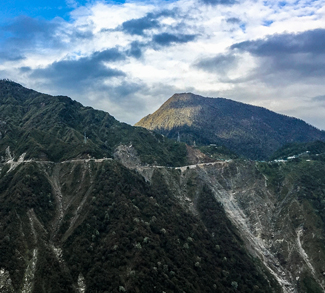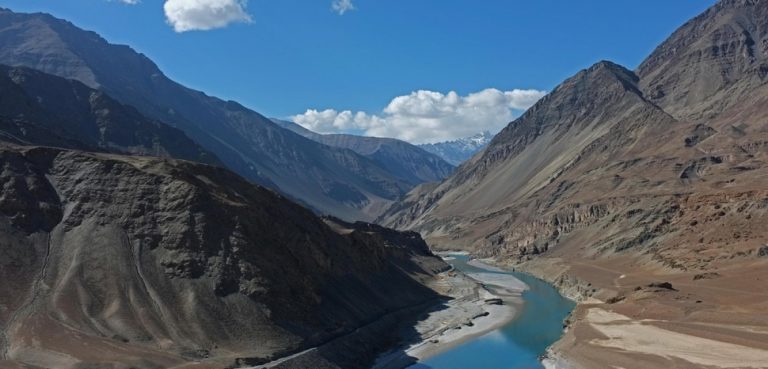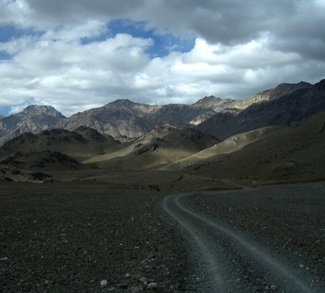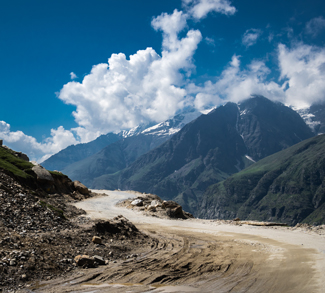Summary
It all started with PLA soldiers building a road on the Doklam Plateau, a stretch of disputed and highly-strategic territory where the borders of China, Bhutan, and India meet in the Himalayas. Indian soldiers responded by entering the plateau in June and forcing the construction crew to halt its work. Then Beijing chimed in, publicly demanding that India withdraw from its “sovereign territory.” And now both sides are digging in militarily and diplomatically for the long haul.
It appears as though the Doklam Plateau will remain a geopolitical flashpoint for the foreseeable future.
Background
Why is the Doklam Plateau important?
The plateau has long been claimed by both Bhutan and China. It occupies a highly strategic position above the Siliguri Corridor, or “chicken’s neck,” which connects India’s northeast to the rest of the country. If China were to build transport and, eventually, military infrastructure, the plateau would serve as an ideal launching point for an invasion that would effectively divide India into two.
The Doklam Plateau standoff also serves to probe India’s bilateral relationship with Bhutan. India inherited Bhutan’s protectorate status from the United Kingdom in 1947, and their bilateral relationship was overhauled in 2007 with the India-Bhutan Treaty of Friendship, which forbid “the use of territory for activities harmful to the national interests… of the other.” India is also pledged to the defense of Bhutan should a war break out.
Why is China building infrastructure in disputed territory?
The Chinese and Bhutanese governments have been negotiating over their border disputes since 1984, and all without much progress to show for it. In the past, Beijing has offered compromises involving two pockets of territory in the northeast in exchange for the Doklam Plateau to the southwest. China’s fixation on Doklam is strategic in nature for reasons outlined above.
The decision to move forward with road construction stems from impatience over border negotiations – Bhutan is unlikely to budge on Doklam for India’s sake – and a desire to test the mettle of the Indian authorities. One new road in and of itself is far from a game-changer, but its construction tests the responses of Bhutan, India, and other regional players. Should the road be built quietly with little pushback, then more infrastructure would surely follow. Doing so strengthens China’s hand on two fronts: at the negotiating table, and militarily should the negotiations fail. This is precisely how China transformed a few reefs in the South China Sea into a network of military installations.
The Chinese government also wants to test the limits of the India-Bhutan bilateral relationship. Bhutan has been coming dislodged from its singular pro-India orbit of late, though it remains overwhelmingly tied to New Delhi on trade and defense. If China were to move in on the Doklam Plateau and India stand aside, it would push Bhutan toward taking China’s original deal in the knowledge that it couldn’t depend on New Delhi in the future.
There’s also the matter of India’s spurning of China’s One Belt One Road (OBOR) initiative. These moves in Doklam might be coming now as a way to ‘punish’ New Delhi for not taking part in President Xi Jinping’s signature policy.
The original idea was to test India’s response. A response is exactly what Beijing got, and now that it has become an international issue – and a matter of nationalist honor in China’s state-owned press – the crisis risks taking on a life of its own.
Why is India responding so forcefully?
Prime Minister Modi’s government has been markedly forceful in its response. Indian troops entered Bhutan to halt the seemingly innocuous construction of a road, and troop levels have been reinforced up and down the Himalayan border as rhetoric from China ramps up. Why? The simple answer is that the Modi government has been taking lessons from China’s foreign policy elsewhere. In the absence of powerful third-party guarantors or universally accepted norms, the status quo is everything in a border dispute. Again, nowhere is this more obvious than in the South China Sea. The Indian government probably examined a case like the Philippines, where slow incremental progress on the ground by the Chinese side trumped an appeal to international jurisprudence by Manila. Given this precedent, New Delhi can appreciate the importance of making sure that the status quo remains neutral and doesn’t begin to tilt in China’s favor. Thus the decision was made to intervene.
What can we expect in the weeks to come?
It’s unlikely that either side will back down. For India, there’s too much strategic ground at stake and the government can credibly claim to be backing an ally in Bhutan. On China’s end, backing off would be taken as weakness ahead of a key Communist Party congress this autumn. In reshuffling the standing committee of the politburo, this congress will determine the make-up of future Chinese governments. We can be sure that President Xi won’t be weakening his hand and that of his allies by retreating, especially now that the media spotlight is on the Doklam Plateau. A lot of this spotlight comes from within China itself, as the standoff has quickly become a cause célèbre for Chinese nationalists.
Both sides of the front will remain on alert for the foreseeable future. Indian troops can technically remain in place in Doklam at the behest of Bhutan’s government. Under these conditions it’s always possible that an exchange of fire could take place near Doklam or anywhere else along the contested Himalayan border. Such exchanges of fire have taken place in the past, but they tend to be limited and they don’t lead to wider conflict. There’s no reason to believe that this time around would be any different.




